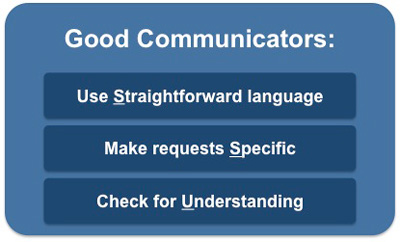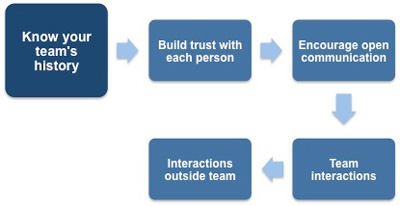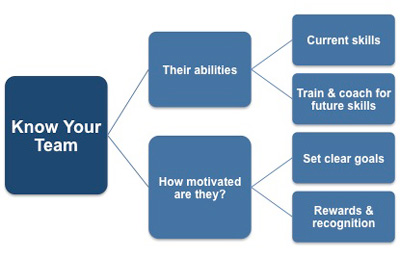Qualities of Leadership
Warren Bennis is an American scholar, organizational consultant, and author, widely regarded as a pioneer of the contemporary field of Leadership Studies. He has written approximately 30 books on leadership. Bennis believes that the only way to get the best performance from your team is through your own behavior.
Does your behavior display that you know where you are going and why it is important that you get there?
Does it show that you care for each member of your team, the team as a whole, and attaining the team goal?
Bennis refers to four behaviors managers must become competent in to be good leaders. These are management of attention, meaning, trust, and self.
• Attention - sum up goals in a way team can buy into
• Meaning - clearly state aims and priorities
• Trust - build rapport and open, honest communication
• Self - lead by example
Bennis says that only when someone has learnt these competencies will they be able to display them in their behavior and become a good leader.
A common element of such behavior is the ability to communicate clearly and concisely with others. Good communication, whether verbal or written, should remove any uncertainty by using the S.S.U. principle in all exchanges.
 |
This means that you communicate with others by making your requests very specific, use straightforward language free of jargon and ambiguity and finally check that you have been clearly understood. By communicating in this way you will ensure that your team is confident of your direction and that you care about them.
Learning Your Team's History
Before you can make real progress with your team you need to appreciate what has gone on before you became their manager. This will take time and requires you to build up trust so that individuals can be honest in answering your questions.
Using your organization's appraisal system with its regular progress meetings will help develop this trust with your team as they can be assured of the confidentiality of your discussions. Over time you will build up a rapport with each member that encourages them to perform to the best of their ability.
 |
You also need to understand the nature of past interactions outside of the group, both within the organization and with external parties. By identifying any problems in this area you can begin to rebuild respect and understanding in these relations so that future relations have a positive impact on your team's performance.
By understanding what has gone before you can get a true picture of what steps you need to take to restore the self-esteem and motivation of your team. You demonstrate through your own behavior that you will seek answers to their problems and coach them how best to meet their targets.
For example, the week after bills are sent out your Customer Support Team always complain of irate customers calling back because their replacement bill hasn't arrived the following day as promised. On investigation you discover this is because the system only reprints bills once a week. Letting your members know of this process means that they can then inform the customers appropriately and avoid setting unrealistic expectations. This Team Productivity Template provides you with three steps that will help you to identify the issues affecting your team's productivity.
Know Your Team
By investigating the history of your team you can discover how successful previous managers have been in establishing incentives to motivate the team and how well each member's abilities match their role. Many books on leadership tell you that by carefully choosing the members of your team, problems of lack of ability and motivation are resolved! You will rarely come across situations where you can do this, however, because you will usually have to work with the team you are given or inherit. This Team Satisfaction Template uses a simple scale to rate the level of satisfaction of each of your team members.
Your first action should be to understand each of your members in terms of the abilities they have now, their likely potential, how motivated they are, and if there is anything that will motivate them further. There will only be certain issues you can influence, for example guidance, support, coaching, and recognition. So try to avoid discussing things that you have no control over, such as pay structures or organizational policy.
 |
You can use the appraisal process to your advantage by conducting short quarterly or monthly reviews of progress with your team members to not only monitor how well they are performing but also to gain valuable information about any issues that they feel are holding them back. These issues may be due to a lack of integration within the team, and depending on the nature of your team you may find conducting Peer Evaluations an excellent way to discover the root causes and possible solutions.
You must first ensure that such an exercise is viewed in a constructive way and not seen as a witch-hunt. You will need to be explicit in your instructions so that everyone knows what is expected of them, how you will use the findings, and how you will communicate them to the team. For example, you may want to present the broad findings to the whole team and discuss how these affect performance, and then talk more specifically to individuals as part of the appraisal process
If you wish to involve your whole team in this process it is referred to as a 360° evaluation. Each member rates all other members of the team (including themselves and you as leader) against certain criteria of your choosing, with '1' being poor and '5' being excellent. This 360 Degree Performance Evaluation template provides you with a set of questions you can use to assess individual performance within your team. Your criteria could be:
• How reliable is the person?
• Is the person a team player?
• Does the person show a positive attitude towards others?
• Are the person's skills a valuable asset to the team?
• Does the person show a positive attitude towards their work?
• Is this person someone you would be happy to have leading you?
• Does this person suggest innovative ideas that help the team?
• Is this person supportive of other members?
• Does this person carry their fair share of the workload?
All these ratings are done anonymously and the resulting spreadsheet indicates where each individual is strong and areas that need development. It will also show you the breadth of skill across the whole team and highlight any gaps you team may have.
For example, an individual may be seen by the majority of the team as someone they are happy to be led by, but from your other research you know that the person does not recognize this attribute in themselves. In this case, you have identified someone others are happy to follow, but who needs coaching and mentoring in order to achieve this leadership role.
This information will help you to come up with a development plan for each team member that enables him or her to work on their strengths. If you have the flexibility to alter roles within your team in accordance with what you have learnt about each person then this will help to maximize motivation and performance.
An equally important part of this process is to review the resources your team has to work with. Do they have the necessary systems and equipment they need to perform their role? For instance, in our Customer Support Team example you may be able to gain 'read only' access for the team to certain systems that enable them to give more informed answers to callers.
This Performance Improvement Checklist will help guide you through the steps you need to take to address any under-performance from your team.
You may also be interested in:
Team Performance Problems | Herzberg's Hygiene Theory of Motivation | Common Fallacies About Leading Teams | Six Silent Barriers to Performance | Five Key Team Performance Factors | Matrix Management Issues | GroupThink and in-group Behavior.



